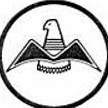-
Posts
11,926 -
Joined
-
Last visited
-
Days Won
163

Shadrach replied to Echo's topic in Vintage Mooneys (pre-J models)

Shadrach replied to mooneyflyer's topic in Vintage Mooneys (pre-J models)

Shadrach replied to NicoN's topic in Modern Mooney Discussion

Shadrach replied to mooneyflyer's topic in Vintage Mooneys (pre-J models)

Shadrach replied to mooneyflyer's topic in Vintage Mooneys (pre-J models)

Shadrach replied to hais's topic in Modern Mooney Discussion

Shadrach replied to 33UM20C's topic in Engine Monitor Discussion

Shadrach replied to hais's topic in Modern Mooney Discussion
We have placed cookies on your device to help make this website better. You can adjust your cookie settings, otherwise we'll assume you're okay to continue.